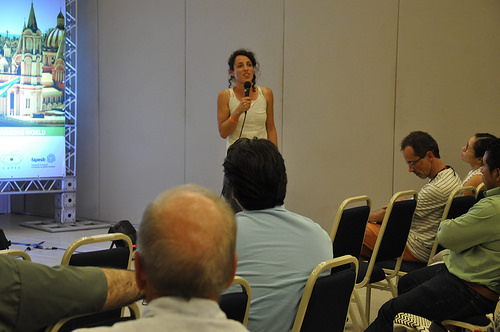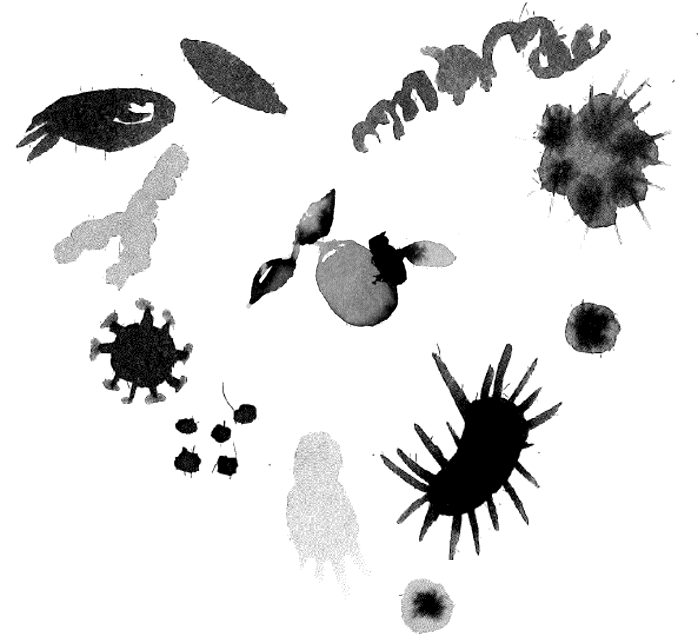Contact Details
- Bios
- Centre de Biologie et de Gestion des Populations
- 755 avenue du campus Agropolis
- CS30016
- 34988 Montferrier sur lez cedex
-
France
- Téléphone :+33 (0)4 99 62 33 22
- Télécopie :+33 (0)4 99 62 33 45
- Adresse mail : marie-pierre.chapuis@cirad.fr
- Orcid ID: 0000-0003-4405-7722
Education and Professional Employment
2009 - current, Cirad Researcher, France (Honorary Research Affiliate of the School of Biological Sciences, Sydney, Australia)
2007 - 2009, Marie-Curie Outgoing International Fellow, CBGP, Montpellier and University of Sydney, Australia, with G.A. Sword and S. J. Simpson
PhD. University of Montpellier, France 2006 (Supervisors: A. Estoup, Y. Michalakis & M. Lecoq)
MSc. University of Montpellier, France 2002 (Supervisor: A. Estoup)
Main Research Interests
Ongoing Research Lines
Crop pests are a major constraint to ecological intensification of agricultural production systems. We develop and extend a landscape genomics approach to address pest dispersal in relation to their environment as a prerequisite to improve pest management strategies. Our main case study is the Oriental fruit fly, Bactrocera dorsalis, an invasive key pest of mango and other fruits, for which we implement an intensive demo-genetic monitoring in West Africa. We assess and/or develop (i) high-throughput sequencing techniques for generating SNPs on a large number of samples at a reasonable cost, (ii) statistical methods to characterize the spatiotemporal relationships between pest abundance, active short-distance dispersal, passive long-distance dispersal, and the environmental matrix, and (iii) inferential methods to quantify the spatiotemporal variation of demographic parameters taking into account the landscape. French speakers will find more details on this project in an article published in the magazine "Passion Entomologie".
Main collaborators: Karine Berthier, Thierry Brévault, Cécile Caumette, Raphaël Leblois, Sylvain Piry.
Publications: 28, 33, 44.
Characterization of the diversity associated with field crops

This initiative aims at contributing to the international efforts to develop species identification tools, primarily in insect pest species and at a recent taxonomic level. With my collaborators, I first focus on integrative revisions based on morphological and molecular data for two Orthopteran case studies: we use the RAD-Seq technique, geometrical morphometry and the study of acoustic communication to explore species limits within the Calliptamus genus, and we combine microsatellite genotyping, mitochondrial barcoding, and morphological and ecological data to resolve the enigmatic genetic isolation of the ‘Palavas grasshopper', a giant form of the migratory locust. Furthermore, we build on the RAD-Capture method from Ali et al. (2016) to target several thousand SNP markers, selected for their quality and high level of polymorphism to describe the worldwide structure of populations from the Bactrocera dorsalis complex, and develop a molecular tool for rapid identification of the geographical origin and specific status of quarantine fruit flies caught in monitoring networks from EU phytosanitary services. Finally, as a first step toward considering the microbial compartment for solving key questions in plant health, we characterize microbiota composition variation in phytophagous insects according to host plants (e.g. fruit species in fruit flies).
Main collaborators: Emeline Charbonnel, Armelle Coeur d'Acier, Marion Javal, Emmanuelle Jousselin, David Ouvrard.
Publications: 30, 37, 39, 42, 43, 45.